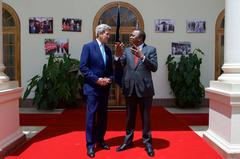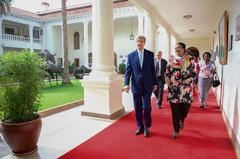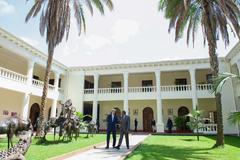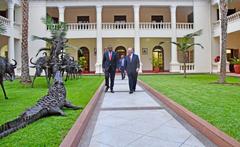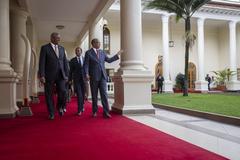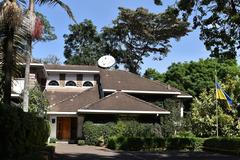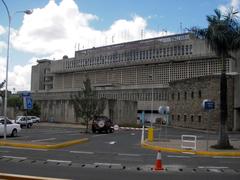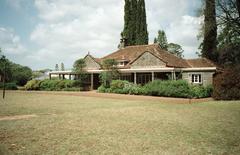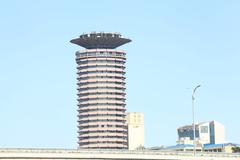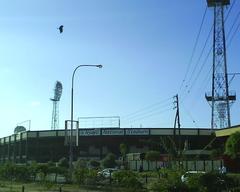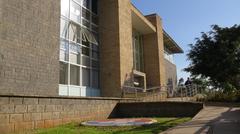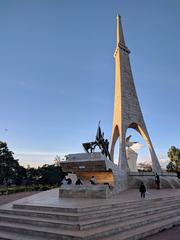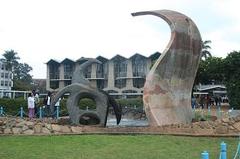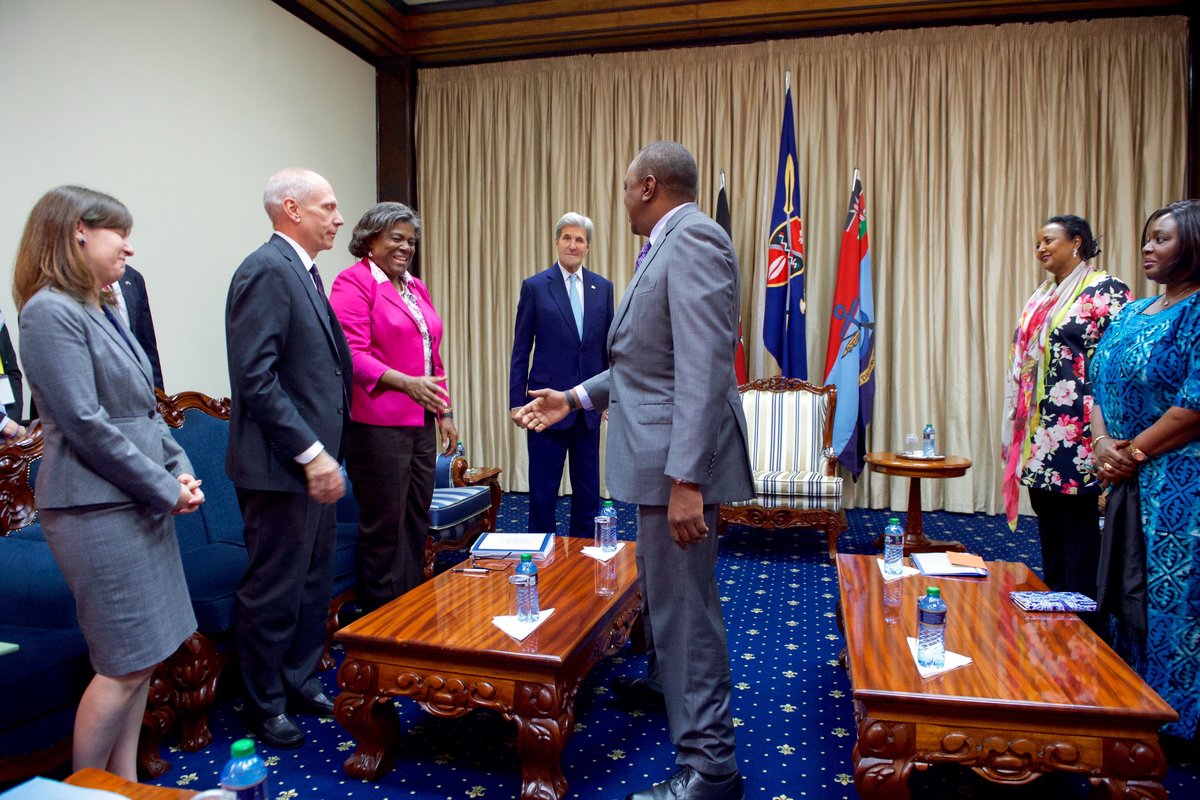
State House Nairobi Visiting Hours, Tickets, and Historical Significance Guide
Date: 14/06/2025
Introduction
State House Nairobi is one of Kenya’s most prominent landmarks, symbolizing the nation’s historical journey, architectural heritage, and political evolution. Originally constructed in 1907 as the colonial Government House, it transitioned post-independence to the official residence and principal workplace of the President of Kenya. Its iconic presence, coupled with its rich architectural legacy and ongoing role in governance, makes it a focal point for both heritage enthusiasts and those interested in Kenya’s contemporary political landscape (Wikipedia; WhownsKenya). This guide provides detailed insights into the history, architecture, visiting protocols, recent renovations, and nearby attractions related to State House Nairobi.
Table of Contents
- Introduction
- Colonial Origins and Early History
- Architectural Design and Influences
- Renovations and Heritage Controversies
- Heritage Status and Conservation Challenges
- Visiting State House Nairobi: Hours, Tickets, and Accessibility
- Nearby Attractions and Travel Tips
- Symbolism and National Identity
- Frequently Asked Questions (FAQ)
- Conclusion
- Call to Action
Colonial Origins and Early History
State House Nairobi was built in 1907 to serve as the residence of the Governor of British East Africa, as Nairobi became the administrative capital, replacing Mombasa (Wikipedia; Tuko). Designed by Sir Herbert Baker, a renowned British architect, the building exemplified late Victorian and neo-classical styles, with imposing columns and a distinctive red-tiled roof (Kenyans.co.ke).
After independence in 1963, the building was renamed State House and became the official residence of Kenya’s Prime Minister, later the President, cementing its role in the nation’s governance (Wikipedia). While it is the official residence, most presidents have used it primarily for official functions and ceremonies.
Architectural Design and Influences
Sir Herbert Baker’s design for State House Nairobi incorporates hallmarks of late Victorian and neo-classical architecture, including balanced proportions, ornate chimneys, and grand columns at the entrance (Kenyans.co.ke). The building sits on approximately 3 square kilometers of landscaped grounds, forming a prominent feature in Nairobi’s cityscape (WhownsKenya). Baker’s influence is also seen in other Nairobi landmarks such as the Supreme Court and Kenya Railways Central Station.
Renovations and Heritage Controversies
Recent Renovations (2023–2025)
Extensive renovations completed in early 2025 have sparked significant public debate. Key changes included:
- Replacement of the iconic red-tiled roof with a modern flat design, now painted white and featuring a dormer with the presidential standard (Kenyans.co.ke)
- Upgrades to the main courtyard, new cabro paving, and construction of a new pavilion for hosting dignitaries (WhownsKenya)
- Structural reinforcements and interior modernization (The Kenya Times)
Architectural and Cultural Concerns
The renovations, led by the Kenya Defence Forces (KDF), were justified as necessary for security and structural reasons (Kenyans.co.ke). However, heritage advocates and architectural experts have criticized the alterations for diminishing the building’s historical value and altering Baker’s original vision (Standard Media). The Architectural Association of Kenya (AAK) has called for clear heritage protection policies and greater public consultation in future projects (The Star).
Financial Implications
The renovations were part of a broader government plan to refurbish state houses and lodges, with the Nairobi State House project alone costing KSh 1.7 billion by September 2024 (Standard Media). Public scrutiny has centered on the cost and transparency of the process, especially during times of economic hardship.
Heritage Status and Conservation Challenges
Despite its historical and architectural importance, State House Nairobi is not officially gazetted as a national monument, though it is protected under the Protected Areas Act for security reasons (Standard Media). This lack of formal heritage status complicates conservation efforts and exposes the site to unsupervised alterations. Heritage experts advocate for integrative conservation approaches that balance urban development, security needs, and public engagement (Springer Link).
Visiting State House Nairobi: Hours, Tickets, and Accessibility
Security and Access Protocols
State House Nairobi is a high-security facility, protected around the clock by the elite General Service Unit (GSU) (The Star). Unauthorized entry is strictly prohibited. Access is typically restricted to official functions, special invitations, or rare public tours during national events.
Visiting Hours and Tickets
- No routine public visiting hours or ticket sales: Entry is by official invitation or during government-announced special events.
- Special tours: Occasionally arranged for educational groups or during national celebrations. Advance booking and security clearance are required (Kenya Tourism Board).
Guided Tours and Visitor Experience
- Guided tours: When available, are highly structured and supervised. Visitors may view select areas such as gardens and main entrances but are not allowed in private offices or residential quarters.
- Photography: Prohibited in most areas except by express permission, and only in designated zones (Ireland.ie).
Dress Code and Conduct
- Dress code: Formal or smart business attire is required; casual wear (jeans, t-shirts, shorts, open-toed shoes) is not permitted.
- Behavior: Quiet, respectful conduct is mandatory; disruptive behavior is not tolerated.
- Electronic devices: Use is restricted and only allowed in specific areas.
- Prohibited items: Weapons and other high-risk items are banned.
Accessibility
Due to the historic architecture and security features, accessibility for visitors with disabilities is limited. Advance notice is essential if special accommodations are needed (Travel.State.Gov).
Nearby Attractions and Travel Tips
Exploring State House Nairobi’s surroundings enhances your heritage itinerary. Notable nearby sites include:
- Uhuru Park: Popular for recreational activities and scenic views ([Uhuru Park visitor guide]).
- Nairobi National Museum: Showcases Kenya’s diverse cultural and natural heritage ([Nairobi National Museum article]).
- Kenya National Archives: Features exhibitions on Kenya’s history.
- Nairobi Arboretum: Offers tranquil gardens and nature trails.
Travel Tips:
- Carry valid identification at all times.
- Avoid photography near State House unless permitted.
- Plan your visit to avoid peak traffic hours in Nairobi.
- Use reputable tour guides; public transport is limited in the immediate area due to security (Holidify).
Symbolism and National Identity
State House Nairobi is a living symbol of Kenya’s sovereignty, governance, and national identity. It has hosted every president since Jomo Kenyatta and is the venue for state functions, diplomatic receptions, and commemorative events like Madaraka Day and Jamhuri Day (Wikipedia; The Kenya Times). Its visibility in national life makes it a unifying icon and a cornerstone of Kenya’s collective memory.
Frequently Asked Questions (FAQ)
Can I visit State House Nairobi?
Public access is highly restricted. Visits are possible only during special events or by official invitation.
Are tickets required?
There are no tickets for routine visits. Special events may require advance registration.
What are the visiting hours?
There are no regular public hours. Entry is limited to special occasions.
Is photography allowed?
Photography is generally prohibited except in designated areas and with permission.
Is State House accessible to people with disabilities?
Accessibility is limited; arrangements must be made in advance when access is granted.
Conclusion
State House Nairobi stands as a testament to Kenya’s historical legacy, architectural grandeur, and national identity. While public access is limited, understanding its significance enhances appreciation of Nairobi’s heritage sites. The recent renovations have sparked important debates about heritage conservation, modernization, and the role of public engagement in preserving national landmarks. Visitors are encouraged to explore nearby attractions and stay informed through official channels for rare opportunities to experience this emblematic site.
Call to Action
For more travel tips and in-depth guides on Nairobi historical sites, download the Audiala app or read our related articles on the Nairobi National Museum and top attractions. Stay connected on social media for updates on special events, heritage tours, and rare opportunities to visit State House Nairobi.
Visuals and Interactive Media Suggestions
- High-quality image of State House Nairobi with alt text “State House Nairobi front view”
- Image of the original red-tiled roof with alt text “State House Nairobi red-tiled roof”
- Map showing State House and nearby attractions with alt text “Map of State House Nairobi and nearby attractions”
- Virtual tour links (if available)
Sources
- Wikipedia. State House, Nairobi.
- Tuko. Five Facts You Didn’t Know About State House Nairobi.
- WhownsKenya. State House: Year It Was Built, First Tenant, The Designer of the Building and Acreage It Occupies.
- Kenyans.co.ke. Story of the Freemason Who Designed State House, Supreme Court, Nairobi School.
- Standard Media. State House Renovations Risk Losing Our History, Architects Say.
- Tuko. Aden Duale Names Architect, Engineers Revamped State House’s Anchored Law.
- The Star. Why it’s a Tall Order to Access the State House.
- Kenya Tourism Board. Official Website.
- K47 Digital News. State House Transformation Sparks Debate: Kenyans Weigh In on Modern Look.
- The Kenya Times. Story Behind Sir Herbert Baker’s Construction of State House Nairobi.
- Pulse Live Kenya. State House Renovations: 5 Radical Changes Ruto Has Made.
- Holidify. Sightseeing and Things to Do in Nairobi.
- Ireland.ie. Overseas Travel Advice: Kenya.
- Travel.State.Gov. Kenya Travel Information.
- Gov.UK. Foreign Travel Advice: Kenya Entry Requirements.
- Springer Link: Urban Heritage Conservation.
- Kenya National Museums. Official Website.








